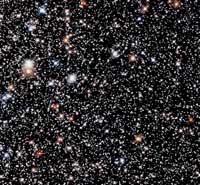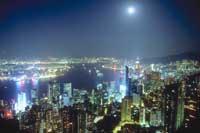In a festive atmosphere looking at the sky
2006/07/30 Rementeria Argote, Nagore - Elhuyar Zientziaren Komunikazioa

To see the sky in its greatness it is not necessary to go far: Staying in the Basque Country or not far away, the Navarra riverbank and the Rioja area are the ideal places to observe the sky. These are low humidity zones, with a relatively stable atmosphere, which reduces the filter effect of the atmosphere. It is best to choose a small village. In general, the most suitable places are places far from cities, far from the influence of artificial light.
To begin with, it is worth mentioning the greatest light in the night sky: The Moon. The full moon will be on August 9. However, if you want to observe the Moon itself, the best are the quarters, that is, the Crescent (day 2, this same week) and the Fourth Waning (day 16).
The Moon, as we have said, makes much light, and therefore, if we want to observe the rest of those in the sky, it is better a night without Moon. Ilberri has been present this past week, so it is not a good time to lie down in the sky with a hammock.
Go Scorpius!
To enjoy the starry sky at night is not necessary much, only that the eyes and time are accompanied. If you want to make a more attentive observation, identifying the objects in the sky, etc., will be of great help some binoculars and a planetarium of the sky (currently on the Internet there are also daily maps).

To the South, on the horizon (if any mountain does not prevent it) you see Scorpius. The Scorpio is one of the constellations of the zodiac, which means that it is on the path that runs through the Sun throughout the year, and is shaped like a scorpion. Four stars form the head (three of them quite bright) and the tail first tilts down and then ascends.
Knowing the situation of Scorpius, you can observe the Milky Way, as this constellation passes to the height of the Milky Way. Looking at the Milky Way is looking at the center of our galaxy, making it a large set of objects. The aforementioned prismatic will serve to differentiate some of them.
Under the reference Scorpio you can see three stars of different colors, one white and one red and one blue.
Shooting stars

In summer there are also shooting stars. If you are attentive, you see stars that go from one side to the other. Well, they are not real stars, although we call them shooting stars or doves stars, but dust particles collided with the atmosphere, called Perseids. In mid-month they are the most abundant. According to astronomers, they will move at high speed (59 km/s) and leave a long and bright footprint.
There is a habit of asking for a desire to see a fleeting star. Summer is also time to look and dream the stars.
Published in 7K.




